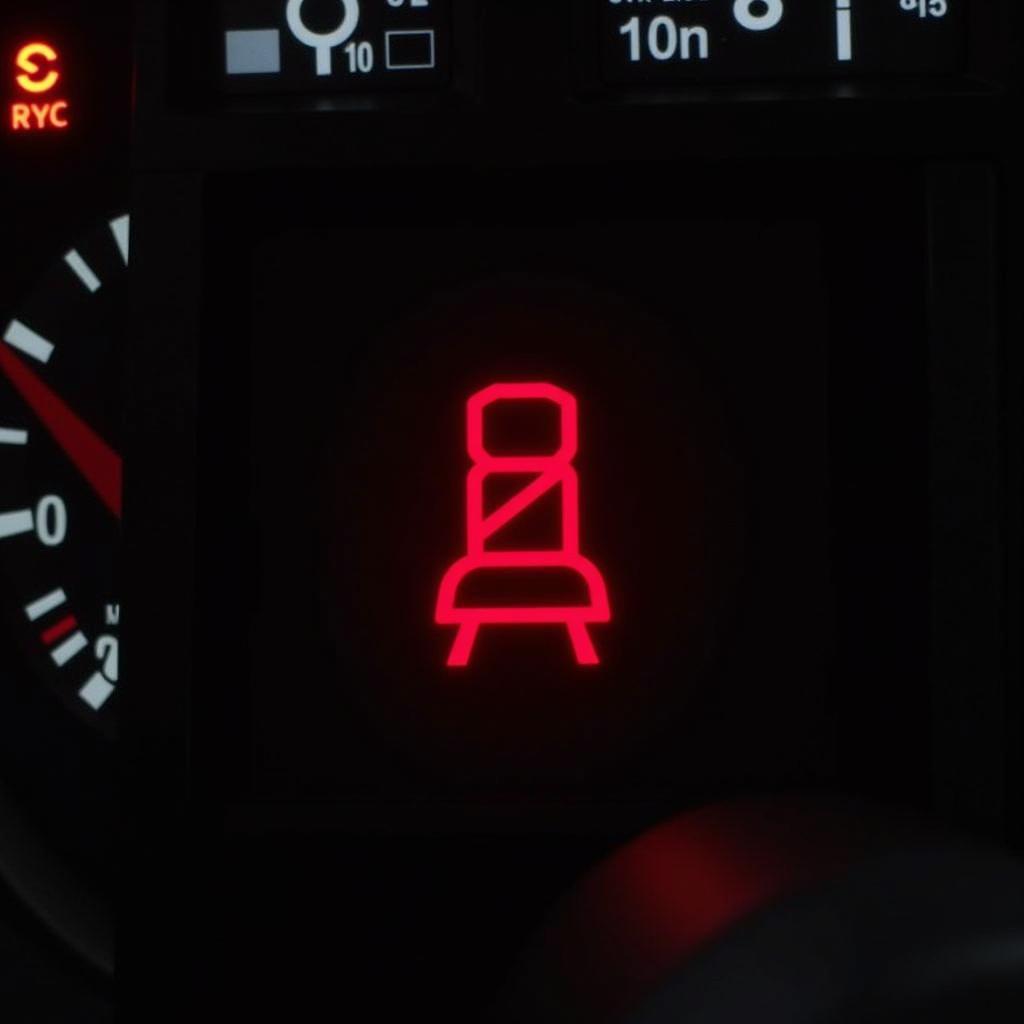The rear seat belt warning light is a safety feature found in most modern vehicles. It serves as a visual reminder for both drivers and passengers to buckle up, ensuring everyone’s safety on the road. When illuminated, this light indicates that one or more seat belts in the rear of the vehicle are unfastened while the car is in motion. Ignoring this warning light not only increases the risk of injury during an accident but may also result in a fine in some jurisdictions.
Understanding the Rear Seat Belt Warning System
Modern vehicles are equipped with sensors in each seat belt buckle. When a passenger sits down and buckles up, the sensor detects the connection and notifies the car’s computer system. If the vehicle starts moving and a rear seat belt remains unbuckled, the sensor signals the computer, which then activates the warning light on the dashboard. This light is usually a red symbol of a passenger wearing a seat belt, often accompanied by an audible chime to further alert the driver.
Common Causes of a Rear Seat Belt Warning Light
While the most obvious cause of the warning light is an unbuckled seat belt, there are other potential culprits that might trigger this safety feature:
- Faulty Seat Belt Buckle Sensor: Like any electrical component, the sensors in the buckles can malfunction. A faulty sensor may fail to detect a fastened seat belt, causing the warning light to stay on even when all belts are buckled.
- Damaged Wiring: The wiring connecting the seat belt sensors to the vehicle’s computer system can become damaged due to wear and tear, rodent damage, or improper installation of aftermarket accessories. This can disrupt the signal transmission and trigger a false warning light.
- Software Glitch: In rare cases, a glitch in the vehicle’s software can cause the rear seat belt warning light to malfunction. This is more common in vehicles with advanced driver-assistance systems that rely heavily on software integration.
 Car dashboard with illuminated rear seat belt warning light
Car dashboard with illuminated rear seat belt warning light
Troubleshooting a Rear Seat Belt Warning Light
Before assuming the worst and heading straight to a mechanic, there are a few simple troubleshooting steps you can try at home:
- Check All Rear Seat Belts: The most straightforward solution is often the most likely. Ensure all rear seat belts are properly fastened, including those in the middle seat. Sometimes, a belt can become lodged in the buckle mechanism, preventing a secure connection.
- Inspect the Seat Belt Buckles: Examine each buckle for any visible damage, debris, or foreign objects that might interfere with the sensor. If you find any obstructions, carefully remove them and try fastening the belt again.
- Check for Weight on the Seat: Some vehicles have sensitive seat belt sensors that might activate even with minimal weight on the seat. If there’s a bag, a pet, or even a heavy object on the back seat, remove it and see if the warning light turns off.
- Restart the Vehicle: Like many electronic glitches, sometimes a simple restart can resolve the issue. Turn off the engine, wait a few minutes, and then restart the vehicle to see if the warning light resets.
When to Seek Professional Help
If the troubleshooting steps above don’t resolve the issue, it’s essential to seek professional help. A qualified mechanic specializing in automotive electrical systems can diagnose the problem accurately and recommend the appropriate course of action.
Here are some instances where professional help is necessary:
- The warning light persists even after trying all troubleshooting steps.
- You suspect a faulty seat belt buckle sensor or damaged wiring.
- You’re uncomfortable disassembling any part of the seat belt system.
Professional mechanics have the necessary tools and expertise to diagnose complex electrical problems and safely repair or replace faulty components. They can also access and troubleshoot the vehicle’s computer system to identify and rectify any software-related issues.
Importance of Addressing the Issue Promptly
Ignoring a persistent rear seat belt warning light is not only unsafe but can also lead to more significant problems down the line.
- Safety Risk: An illuminated warning light often indicates a potential safety hazard. Delaying repairs increases the risk of injury to rear-seat passengers in case of an accident.
- Potential for Fines: In many locations, driving with passengers who are not wearing seat belts can result in hefty fines.
- Possible Vehicle Malfunctions: In some modern vehicles, a malfunctioning seat belt warning system might disable other safety features like airbags or affect the performance of advanced driver-assistance systems.
 Family buckling their seat belts before driving
Family buckling their seat belts before driving
Conclusion
The rear seat belt warning light plays a crucial role in ensuring the safety of everyone in the vehicle. Understanding its function, common causes, and troubleshooting steps empowers car owners to address the issue promptly. While some causes might be simple to fix, it’s always best to consult a qualified mechanic for persistent issues or when dealing with complex electrical components. Remember, prioritizing safety on the road begins with buckling up every time.
Frequently Asked Questions
Can I disable the rear seat belt warning light?
While it’s technically possible to disable the warning light, it’s highly discouraged. Disabling safety features compromises the well-being of your passengers and might be illegal in some areas.
How much does it cost to fix a rear seat belt warning light?
The cost of repair varies widely depending on the underlying cause. A simple sensor replacement might cost a few hundred dollars, while a complete wiring harness replacement could cost significantly more.
Will a faulty rear seat belt warning light affect my insurance?
A faulty warning light itself might not directly impact your insurance premiums. However, if the malfunction leads to an accident where passengers weren’t wearing seat belts, it could affect your coverage and premiums.
Can I use aftermarket seat belt buckles?
While aftermarket options are available, using them is not recommended as they might not meet the same safety standards as original equipment and could interfere with your vehicle’s safety systems.
Does the rear seat belt warning light work if the seat is empty?
No, the warning light is activated by weight sensors in the buckle. It will only illuminate if a passenger is seated and the belt is unbuckled.
